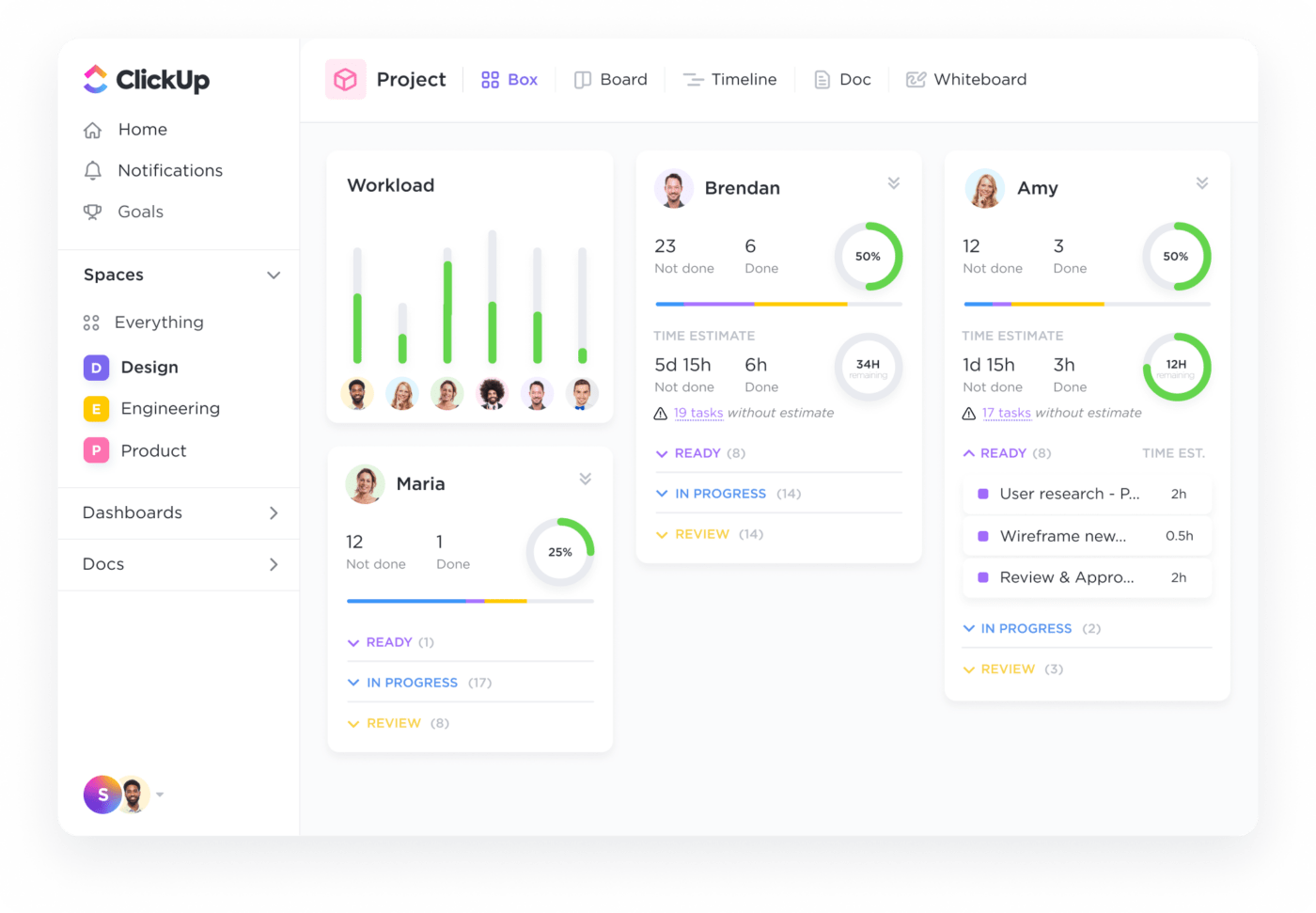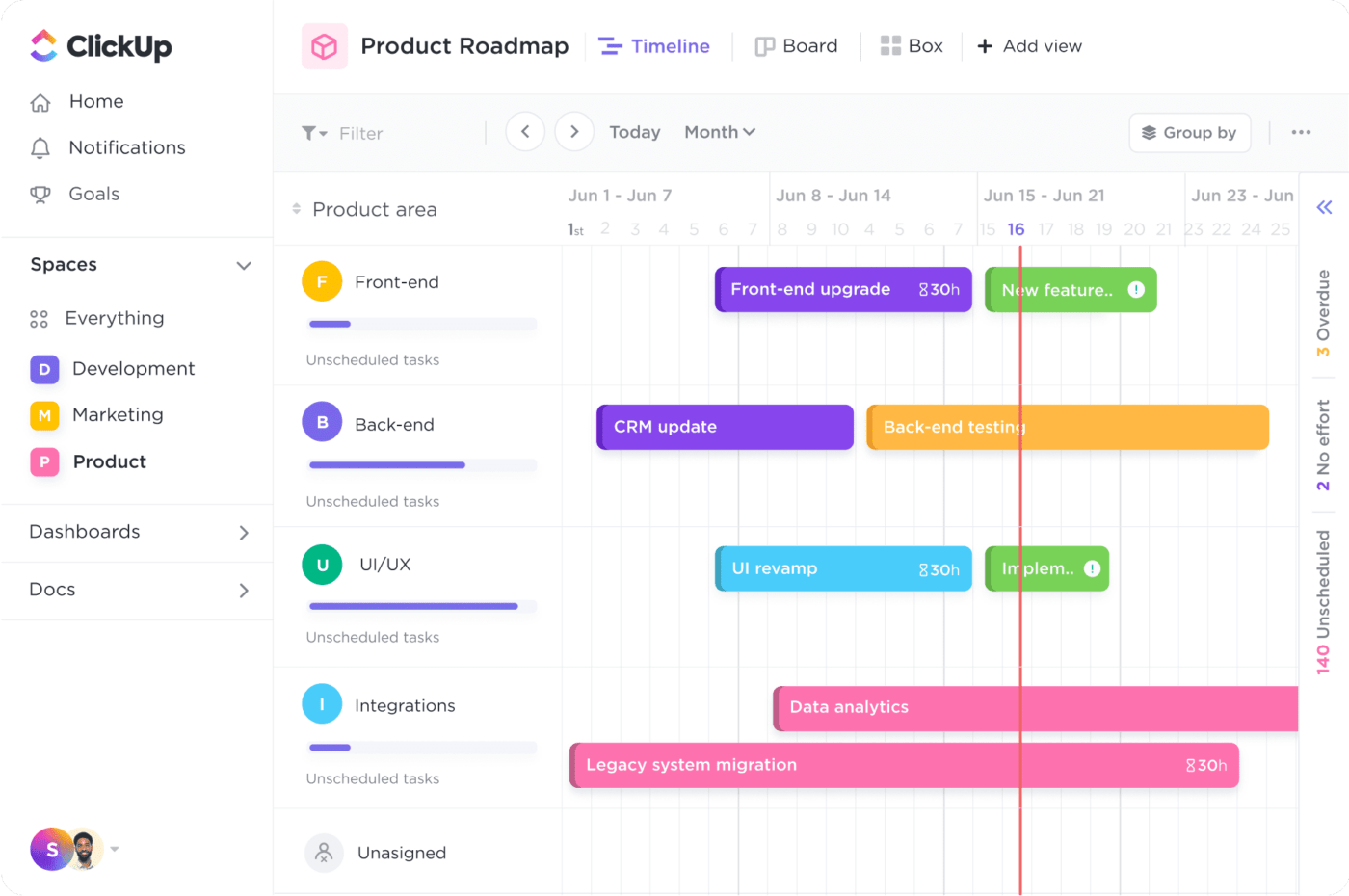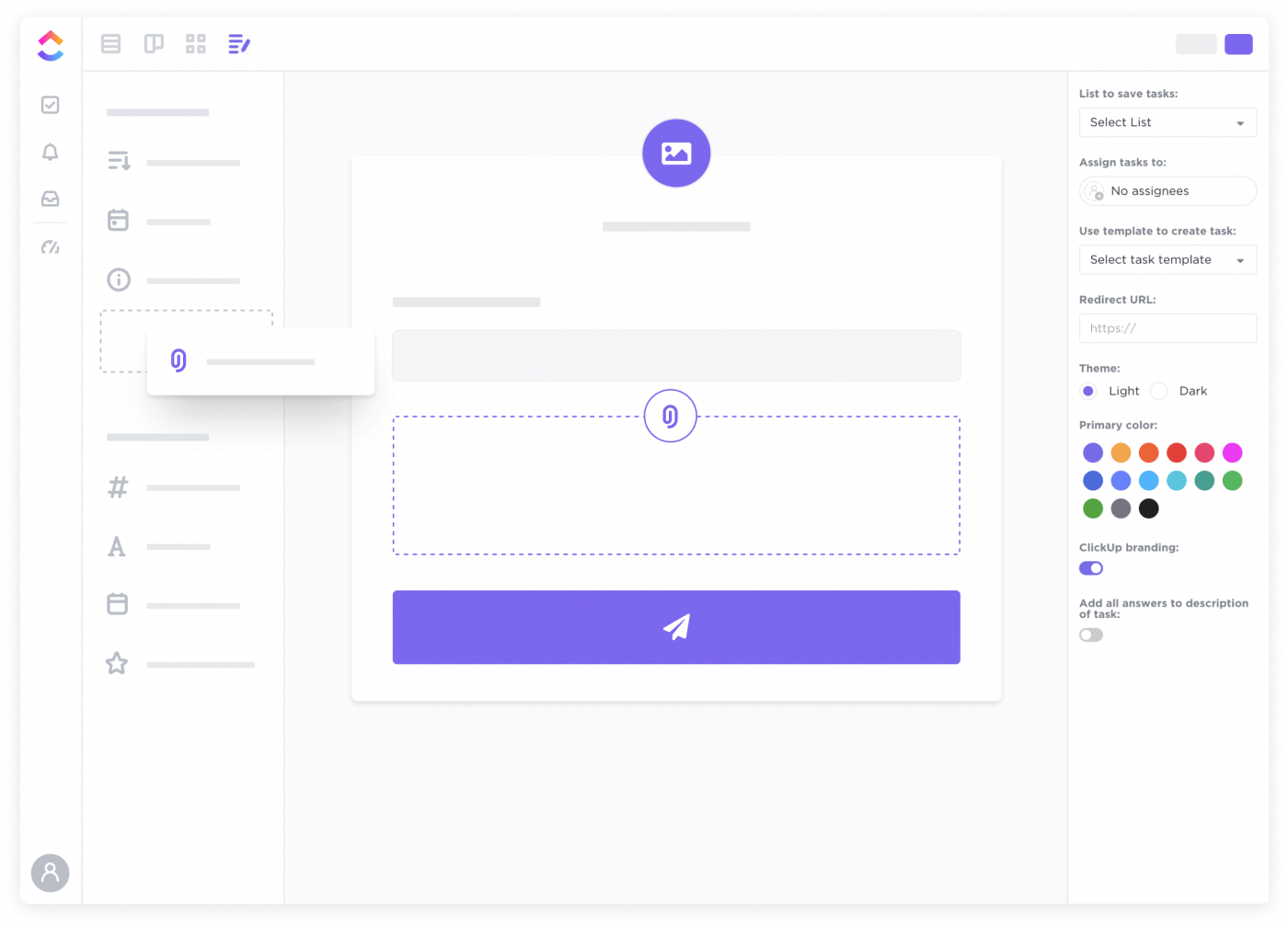

“Better safe than sorry” is such a cliché line, right?
Still, some project managers neglect to get the data that could help them prevent projects from derailing. But here’s the thing: Even the most carefully elaborated project plans aren’t problem-free.
And problems almost inevitably come up throughout the project lifecycle. They can be deviations from the project goals or complete project failure.
Regardless, avoiding those problems in a timely fashion is the project manager’s job and the purpose of KPIs for project management.
Read on and get to know our selection of project management KPIs (with examples). We want you to learn what each indicator means and identify the ones that make the most sense to your project performance.
Summarize this article with AI ClickUp Brain not only saves you precious time by instantly summarizing articles, it also leverages AI to connect your tasks, docs, people, and more, streamlining your workflow like never before. Summarize article
Summarize this article for me pleaseFor instance, your key performance indicators might disclose weak points in a process, an assignee, or a task. But it’s up to you as the project manager or team lead to make the corrections or improvements to eliminate or strengthen those points before it’s too late.

KPIs in project management don’t depend on subjectiveness. Instead, they rely on quantitative data—often a measurable value you can put against your project goals.
However, you shouldn’t use KPIs in project management and performance metrics interchangeably. Because KPIs are metrics—they both measure project success. But not all metrics are important enough to become KPIs.
Another distinction you must be aware of is the difference between objective and key results and key performance indicators. Most OKR examples you’ll run across work as a framework for goal setting, while KPIs measure factors that contribute to achieving those goals and desired outcomes.

The overall project team has to come to an agreement on the key performance indicators to assess the project’s health and to know what success looks like. But your objectives are not just answers to your project management challenges, they’re what will determine the direction and reasoning of a particular project.
If you need more information to better separate the two, check out our guide to OKRs vs. KPIs!
Summarize this article with AI ClickUp Brain not only saves you precious time by instantly summarizing articles, it also leverages AI to connect your tasks, docs, people, and more, streamlining your workflow like never before. Summarize article
Summarize this article for me pleaseMany project management KPI examples are out there waiting for you to find them. But we want you to focus on only a few of them until you understand the link between project KPIs and goals. Additionally, learning a limited number of KPIs to start with helps you with being selective. Because the temptation to use all KPIs for project management on the face of the Earth is just counterproductive. You must discard the KPIs that don’t actually indicate success in your project. And you’ll only develop the ability to pinpoint those indicators with experience. You can’t also overwhelm your project managers and teams with too much data. Every key performance indicator should be meaningful and in digestible amounts so your team can act on it. You should rely on KPIs in project management to realign the team with your overall goals. We organized a curated list of KPIs by four common areas of project success:
Managing a project’s money and paid resources without a budget would be a disaster waiting to happen. And quite frankly, it’d be financially irresponsible. That’s why project managers set an actual budget right when a project initiates. And they continuously monitor the cost variance vs. budget variance all the way through project completion.
You might need to raise or reduce your project’s budget because of expenditures or cancelled projects. Additionally, you might want to reallocate the entire project budget or just parts of it to other activities, work packages, or even across multiple projects. Let’s look at a few project KPIs to manage your budget more effectively:
Formula: CV = EV – AC
Formula: PV = BAC * scheduled work, where
Example: The PV is $23,000 if 100% of the work is expected to cost $100,000, and 77% of the work has been scheduled.
DIALING IN YOUR PLANNED BUDGET
Pro Tip: Compare the PV against the AC and adjust your project’s budget accordingly for the best return on investment ROI. Use this information on future projects and continue to evaluate for more precise information.
This is the time spent budgeting the project. It includes all the activities—especially planning—involved in coming up with and agreeing on the most realistic budget.
WHAT IS THE PLANNED VALUE
Pro Tip: Correlate this KPI with other KPIs to understand whether the time spent on a planned budget was enough to meet the project’s success or goals.
In a line-item budget, expenditures are grouped by categories, such as phases or work packages. A low number of line items in this type of budget will indicate that tracking budget spending will be harder.
This is the number of versions your project’s budget had before its final approval. Too many iterations indicate that your project managers likely spent enough time planning the budget, as expected.
IS THE BUDGETED COST LEADING TO SUCCESS
Pro Tip: Compare this KPI with other indicators to unfold the relationship between budget planning time and project success. This will help you measure progress toward
Simply put, managing projects is about two things: money and time. And the goal is to reach all milestones on budget and on time.
But if your project has a lot of phases, work packages, and activities, that’s a challenge right there. Estimating how many tasks you’ll have, the duration toward completing those tasks, available resources, and your schedule variance becomes complex.

And as a result, project execution might fall behind schedule, and companies lose money. Here are a few project timeline KPIs to help you avoid missing your milestones so your entire team stays on schedule.
Formula: SPI = EV / PV
Example: If 53% of the planned work has been completed and the budget to do 100% of the work is $100,000, then the SPI is 0.53 (or 53%). The calculation is (53% * $100,000) / $100,000.
DOES THE PLANNED VALUE MAKE SENSE FOR YOUR SPI
Pro Tip: Consider increasing the efficiency of your resources if your project’s SPI < 1.
Formula: SV = EV – PV
Warning: SV is expressed in monetary units, such as dollars, not time units, such as days or months.
DOES THE PLANNED VALUE MAKE SENSE FOR YOUR SPI
Pro Tip: Consider increasing the efficiency of your resources if your project’s schedule performance index < 1.
Formula: resource capacity = available work hours per day * number of workdays allocated to the project
RC BEST PRACTICES
Pro Tip: Adjust the project’s schedule to match the capacity of your resources or bring in more team members to raise your RC. The amount of daily time available must exclude breaks. Because you’re calculating the RC for a specific project, you must exclude the time spent on other projects.
Formula: (number of projects completed on time / total number of projects) * 100%
Define performance levels, especially an underperformance level of, let’s say, 90%. Then consider any project manager with an on-time completion rate below that level as an underperformer and signal them for a performance improvement plan.
Formula: planned duration – actual duration, where planned duration is the time scheduled to execute the work, and it’s an estimate
The next KPIs evaluate how well the execution of your projects went. But they also determine whether the delivered outcomes met the stakeholders’ expectations beyond just the tasks completed.
Certain quality KPIs tell you if the quality of the work performed within your projects was positive. And other quality KPIs tell you if the environment in which your teams executed your projects was positive. In other words, quality KPIs are measures of either customer or employee happiness.
Formula: (number of employees who left your company / average number of employees) * 100%
Result: A high employee churn rate will likely originate project inefficiency, such as missed milestones, unanticipated expenses, and, down the line, low customer satisfaction.
This KPI assesses customer satisfaction and brand loyalty through a one-question survey. NPS is a number between -100 and 100, which you aim for the higher end.
If you own or manage projects for a single-product company or brand, the survey question would be, “How likely are you to recommend our product to your friends and colleagues?” And if you own or manage projects for a multiple-product brand, you’d tweak the question and mention “brand” instead of “product.”
NPS survey respondents rate the likelihood of recommending your product or brand on a scale of 0–10, with zero being highly unlikely and ten extremely likely. Then, depending on their answers, respondents fall into three categories.
Formula: % of promoters – % of detractors

Transform detractors into promoters to boost your customer loyalty levels. You can create custom forms to get critical feedback from your customers to help you drive up your NPS.
The KPIs below measure your project’s cost-effectiveness. And that’s intimately related to how you utilize your resources.
Are they spending time on project work effectively? And are you spending money on your resources effectively?
In other words, are you spending more time and money on your project than the money you’ll bill your clients? Effectiveness KPIs are indicators to assist you in drawing conclusions about your cost variance across projects.
This is your go-to KPI to evaluate the performance of your team members while executing project work. It gives you insight into the time your team spent on generating revenue and the revenue you’ll actually get from your clients.
Formula: (number of billable hours/number of hours spent doing project work) * 100%
AVOID BURNING OUT YOUR TEAM
Pro Tip: Refrain from aiming for maximum utilization. That’d maximize your revenue, but your workforce would be at risk of burnout, which comes at a price for you.
Sum all costs of giving your employees the conditions to execute your project successfully. Those might range from salaries and employee benefits to office equipment, to name a few.
Compare the average cost per hour with your project’s outcomes. If the latter outweighs the first, then your staff used their project time or planned hours effectively. As a result, you also spent your money effectively!
Summarize this article with AI ClickUp Brain not only saves you precious time by instantly summarizing articles, it also leverages AI to connect your tasks, docs, people, and more, streamlining your workflow like never before. Summarize article